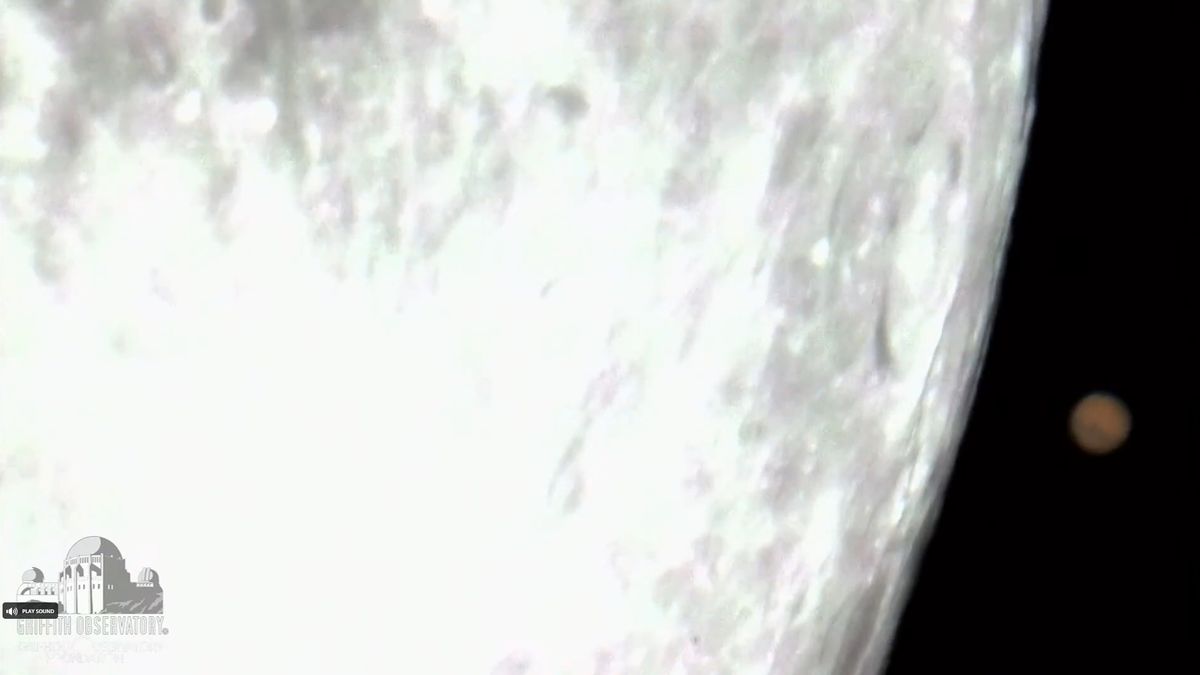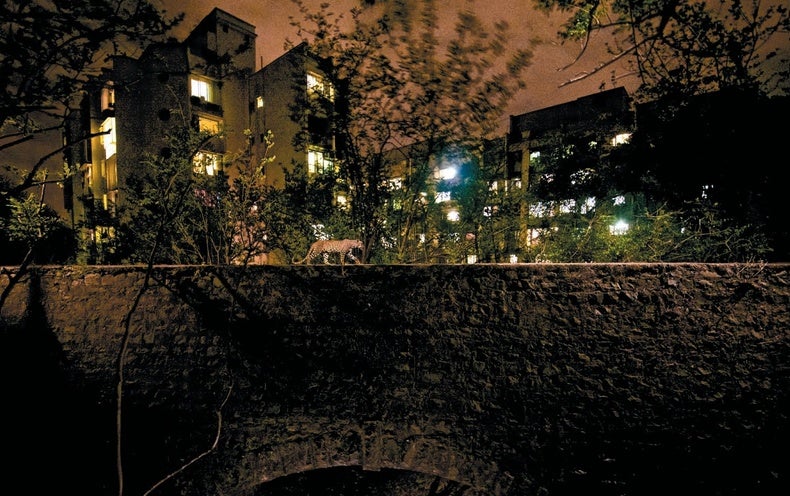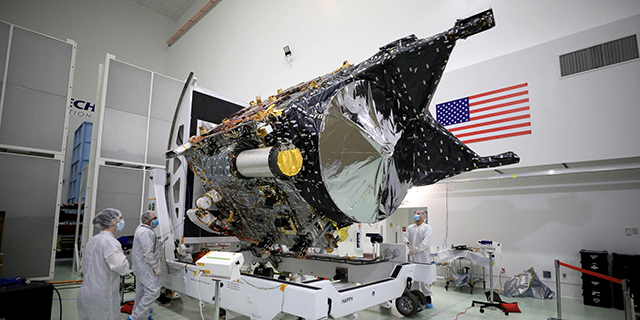On Wednesday (Dec. 7), skywatchers around the world were treated to a celestial show as the full moon eclipsed Mars in the night sky.
The rare event, known as a lunar occultation, refers to one celestial body — in this case, Mars — appearing to disappear or hide behind another — in this case, the moon. This occultation was particularly noteworthy because Mars was at opposition, meaning Earth was directly between it and the sun, making the Red Planet appear particularly bright in the night sky.
Related: See Mars at opposition in these free webcasts tonight (Dec. 8)
Last night’s occultation of Mars by the full moon produced some gorgeous images from observers around the world. The Griffith Observatory in California had a great view of the moon and Mars joining up on Dec. 7 and caught a time-lapse of the Red Planet disappearing behind Earth’s celestial companion as seen in the video above.
In addition, skywatchers around the world have been posting gorgeous images of the lunar occultation of Mars on social media, offering a look at one of the year’s most-watched celestial events.
Astrophotographer Andrew McCarthy caught Mars and the full moon (opens in new tab) in a beautiful close-up:
This is the moment Mars peeked out from behind our moon after being hidden for an hour. This shot was captured using my largest telescope and a special high-speed camera. Seeing another planet rising on the horizon of our moon was such a surreal experience. pic.twitter.com/8IctbVXuUMDecember 8, 2022
Spaceflight photographer John Kraus caught a stunning shot of Mars (opens in new tab) as it appeared behind the moon following occultation:
Amateur astrophotographer Tom Williams produced a gorgeous image of the moon and Mars by combining multiple photographs, and offered an explanation of how he made the image (opens in new tab) on Twitter.
The 2022 Lunar #Occultation of #Mars!This is a crop of a wider image, and shows the red planet on it’s descent behind the eastern lunar limb captured last night from home. Sinus Gomer is central with Syrtis Major at top. See thread for processing. What an event!#astrophotography pic.twitter.com/IBNiW8mA9cDecember 8, 2022
Amateur astronomer and photographer Tom Glenn produced a breathtaking image of Mars (opens in new tab) rising above the moon by stacking 15 different photograph frames.
#Mars rising above the lunar limb. This is a stack of 15 frames captured within a 2s interval during the end of the occultation by the #Moon. Captured with a C9.25 Edge HD and ASI678mc. pic.twitter.com/xrDiI3d7keDecember 8, 2022
Astronomer and science communicator Phil Plait caught Mars creeping behind the moon (opens in new tab) just prior to occultation.
The Moon and Mars a few minutes before #occultation. I shot this through my bedroom window using my spotting ‘scope and a phonecam (that’s why there’s a strong Moon reflection to the upper left). Look at the color contrast! The occultation was cool, taki… https://t.co/lpxYVpmbmi pic.twitter.com/SUISrvttx7December 8, 2022
The lunar occultation of Mars by the full Cold Moon was particularly noteworthy because the Red Planet only appears at opposition every 26 months, so the next opposition won’t occur until January 2025.
Mars was also especially close to Earth during this event, which occurred while the planet was at perigee, or its closest point to Earth in its orbit. According to NASA, Mars and Earth won’t be this close for another 265 years, until 2287.
Editor’s Note: If you snap a great photo of either Mars at opposition or the lunar occultation and would like to share it with Space.com’s readers, send your photo(s), comments, and your name and location to spacephotos@space.com.
Follow Brett on Twitter at @bretttingley (opens in new tab). Follow us on Twitter @Spacedotcom (opens in new tab) or on Facebook (opens in new tab).














